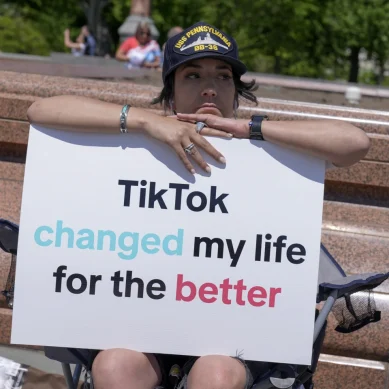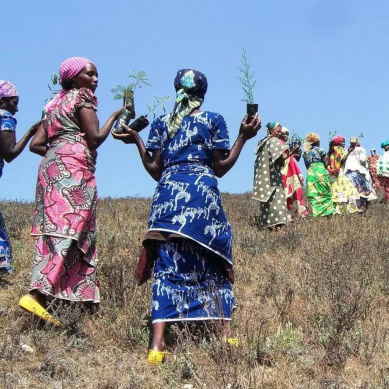
The concept of vulnerability has been explored in hundreds of different ways in the past years, relating to social and cultural learning, organisational growth, leadership, professional and personal success and connection with others.
Brené Brown, with her ground-breaking TED talk, The Power of Vulnerability and her numerous books and programmes, have put vulnerability on the map for us and demonstrated in concrete, meaningful ways how vulnerability is essential to a healthy, nourishing and well-lived life.
For me, one of the most illuminating aspects of vulnerability that Brown shares in her talk – which has garnered over 58 million views to date – is this:
“The problem is…that you cannot selectively numb emotion. You can’t say, here’s the bad stuff. Here’s vulnerability, here’s grief, here’s shame, here’s fear, here’s disappointment. I don’t want to feel these…You can’t numb those hard feelings without numbing the other affects, our emotions. You cannot selectively numb. So, when we numb those, we numb joy, we numb gratitude, we numb happiness. And then, we are miserable and we are looking for purpose and meaning, and then we feel vulnerable, so then we have a couple of beers and a banana nut muffin. And it becomes this dangerous cycle.”
I realise now, in looking back throughout my 18-year corporate career, that I was desperately trying to numb or suppress the painful emotions and experiences, but doing so cut me off from so much, mainly from myself – and from the core of who I was. Becoming a therapist changed all that, in part because to become a good therapist, I found I had to turn myself inside and out and explore all of what was inside of me that I never understood or fully recognised that I needed to look at.
When you do that, you can finally heal and become more at one with yourself so that you can truly connect from the heart, without shame or fear. In speaking about vulnerability in terms of leadership, one definition I’ve honed through working with hundreds of executives across six continents, and one that I find easy for folks to understand and use is this – to me, vulnerability is:
The quality or state of being (intentionally or unintentionally) in a position to experience emotional or physical challenge, failure, confusion, weakness, alienation, fear or change.
I also have seen in my research with thousands of professionals and managers that vulnerability in leadership encompasses this: allowing ourselves to be open enough to experience the potential pain, fear and insecurity that comes when we’re being fully true to ourselves, expressing our deepest and most honest thoughts and feelings.
Vulnerability includes the willingness to be more curious with ourselves (and subsequently with others), to be braver and stronger, allowing ourselves to speak, think, connect and operate from our “own private hearts” and mustering the courage to connect with others from that space of acceptance and trust. This process then opens the door for other people’s private hearts to be shared and respected, with safety and compassion.
This openness to being vulnerable – which is to say, putting oneself in a position where we are letting our defences down so that we can reveal our true selves – requires a large dose of courage, self-awareness, and emotional strength.
There’s a “trueness” that is possible with vulnerability, that is not possible if we refuse to allow ourselves to be open or to experience risk, shame and uncertainty. Why is being vulnerable so scary or challenging at times?
We’ve been trained throughout our lives to put up very strong defences to protect us from anything that could be painful or fear-inducing. And our brains are hardwired to assess risk in a way that can be faulty and limiting.
That includes hiding from situations where we fear we could feel rejection, hurt and judgment – all of which can make us feel alone and apart from others. But these defences also stop us from experiencing other deeply meaningful and life-affirming emotions and experiences.
Renowned writing coach and teacher Bruce Gelfand shared with me recently on my Finding Brave podcast a powerful quote from Ralph Waldo Emerson that is relevant in terms of vulnerability:
“To believe your own thought, to believe that what is true for you in your private heart is true for all men – that is genius.”
In my view, vulnerability is part of that “genius.” It involves respecting and honouring others as you respect yourself, even in the midst of all of our differences. And it means allowing yourself to be in close connection with your own heart and spirit while having deep respect for what others feel and believe.
Can vulnerability be expanded? Vulnerability absolutely can be honed and expanded, but that typically occurs only when we allow ourselves to engage in a process of self-growth and self-acceptance that stretches us to grow as human beings.
In terms of leadership, I’ve seen first-hand that we simply cannot lead a business, team or enterprise well if we’re not leading our own lives and interrelations well. To do that requires embarking on what I call the “finding brave” path – becoming braver to be more fully yourself and living into that reality.
Vulnerability is also the willingness to open ourselves to curiosity – to seeing more clearly how others are perceiving us – and how we are coming across to others and are making people feel.
As Maya Angelou so brilliantly observed, “People will forget what you said, people will forget what you did, but they will never forget how you made them feel.”
If our colleagues and employees are feeling afraid, hurt, threatened, demeaned or shut down in our presence or in receiving our communications, we need to recognise how we’re potentially contributing to those feelings. And that requires vulnerability.
In my therapy training and work, I learned about boundaries which can be defined as the invisible barriers between you and your outside systems, that regulate the flow of input and information to and from you and those outside systems. Boundaries can be measured on a spectrum, from diffuse (very open where everything gets in) to rigid (tightly closed, where no feedback or input is going in or getting out). Neither ends of this spectrum are an ideal or healthy way to live – we want to be in the middle, having balance and moderation in terms of the degree of input we are letting in and allowing to impact us.
- A Tell / Kathy Caprino’s Career & Leadership Breakthrough coaching programme report











